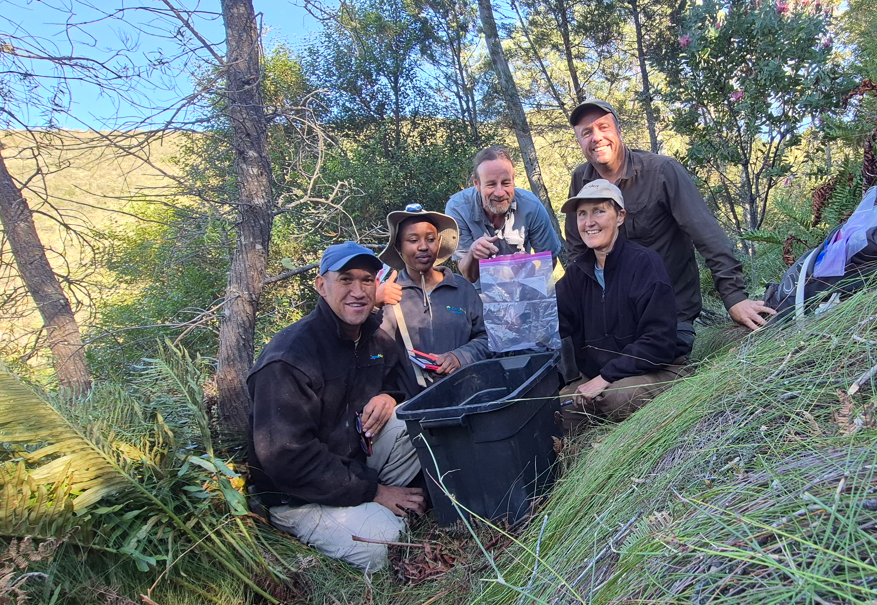The Boosmansbos long-tailed forest shrew. (Photo supplied)
One of the Western Cape’s most mysterious mammals, the Boosmansbos long-tailed forest shrew, has made a reappearance 46 years after it was last recorded.
Conservationists from CapeNature, Grootvadersbosch Conservancy and Helihack, together with volunteer biologists, were “ecstatic” at finding one of these tiny mammals on the edge of a pristine forest patch in CapeNature’s Boosmansbos Wilderness Area, CapeNature said.
The shrew, first described in 1979 by scientist Nico Dippenaar, was recognised as a unique subspecies, geographically isolated from its relatives by the Gouritz Valley.
It had not been seen since 1980 and is found only in a remote afro-montane forest section of the Boosmansbos Wilderness Area. In 2016, the shrew was listed as critically endangered on the IUCN Red List because of its limited known range, coupled with forest habitat loss and the effects of climate change.
From 3 to 6 May the team, equipped with little more than Dippenaar’s original field notes and habitat descriptions, embarked on its fourth attempt in four years to find the shrew.
The now-retired Dippenaar wished the group luck, referring to the species as “a bit of a darling”.
The shrew was found on 4 May.
Marienne de Villiers, an ecologist at CapeNature, said: “At last, I can take this little shrew off my biological bucket list. It’s been a bit like a unicorn for me — a mythical creature that I thought I would never get a chance to see in real life.
“And it’s really comforting to know that at least part of its population, in at least some of its forest habitat, is well-protected.”
 Conservationists and volunteer biologists managed to capture the elusive little shrew. (Photo supplied)
Conservationists and volunteer biologists managed to capture the elusive little shrew. (Photo supplied)
Previous attempts to catch the elusive shrew using standard rodent live traps were unsuccessful. It was hoped that a new method would be more rewarding. But lugging all the gear up to the remote wilderness area, with no vehicle access, was a problem.
Then Helihack’s helicopter came to the rescue. The team was airlifted to a wilderness campsite and then hiked down to set 76 pitfall traps across various habitats.
The Helihack project removes invasive alien species from remote areas, including Boosmansbos.
Each trap was prepared with bedding, shelter and the odd earthworm. At first, the traps yielded nothing but one of the final traps contained a small mammal with a 6cm tail, “unmistakably the long-lost Boosmansbos long-tailed forest shrew”, CapeNature said.
Weighing just 13.7 grams, it was measured, photographed and released into its forest habitat
A genetic sample of the shrew will now be analysed to clarify its relationship to lower-altitude relatives, while further research is needed to better understand its life history, behavioural ecology and the status of its only known population.